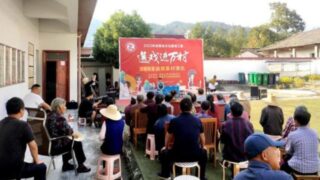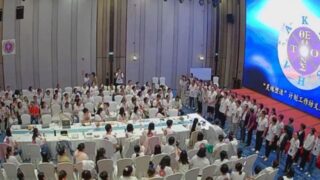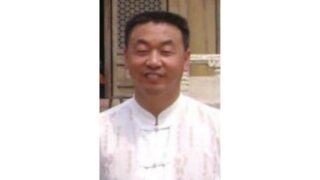While fighting AIDS and drugs, the CCP indoctrinates populations at the Vietnamese border of Yunnan against xie jiao and “illegal religion.”
by Liang Changpu


Bitter Winter reported this month about a surveillance and propaganda operation carried out in in Ningming county, Guangxi province, at the border between China and Vietnam, by Border Police and “Legal Education” officers against xie jiao (i.e., religious groups banned as “heterodox teachings,” although the expression is usually, but less correctly, translated as “evil cults”) and “illegal religion,” i.e., all forms of religion not approved by the CCP. The authorities are afraid that illegal religious groups may enter China from Vietnam, where the situation of religion, although being far from a real religious liberty, is less oppressive.
China shares a long border with Vietnam, which also extends to Yunnan province. The CCP is particularly afraid that “illegal religion” may spread among ethnic minorities, with the end result of undermining their loyalty to the Party. In Guangxi’s Ningming county the campaign targeted the Mien ethnic group, which the Chinese call Yao.
The new campaign in Yunnan is taking place in Honghe Hani and Yi Autonomous Prefecture, in the southeastern part of the province. The prefecture also borders Vietnam. Although due to immigration policies the largest ethnic group in the prefecture now consists of Han Chines, there are also more than 600,000 Hani and more than 900,000 Yi. Both groups have their own shamanistic religions. Besides been considered the poorest among China’s recognized ethnic minorities, the Hani constitute a comparatively close society, and Christian missionary work has never been successful among them. The CCP is however worried by the fact that they live close to the Vietnamese border.
The situation is very much different for the Yi. They have been much more open to Christianity since the first decades of the 20th century, when the Australian missionary Gladstone Porteous of China Inland Mission worked among them and translated parts of the Bible into Yi language. Catholic and Seventh-day Adventist missionaries also operated among the Yi, and the number of Christians is somewhere between the official Chinese figure of 150,000 and the estimate by some Christian sources of 1.5 million.
To counter the influence of Christianity, the CCP has “invented” a religion called Bimoism, from the Yi word for shaman, bimo. CCP-controlled “Bimoist” temples and organizations have been created, giving to Yi shamanism a structure it never had.
In the case of Yi as well, religious “infiltrations” from Vietnam are a new fear. It is not false that, besides “illegal religion,” drugs are also smuggled from Vietnam into Yunnan, and by sharing needles to inject drugs villagers may contract AIDS. It is also true that cracking down on illegal drugs and AIDS is being used as an opportunity to reach remote villages and to indoctrinate Hani and Yi villagers against xie jiao and “illegal religion.” The latter seems to be a threat as serious as drugs and AIDS in the eyes of the CCP security officers at the border between Yunnan and Vietnam.









